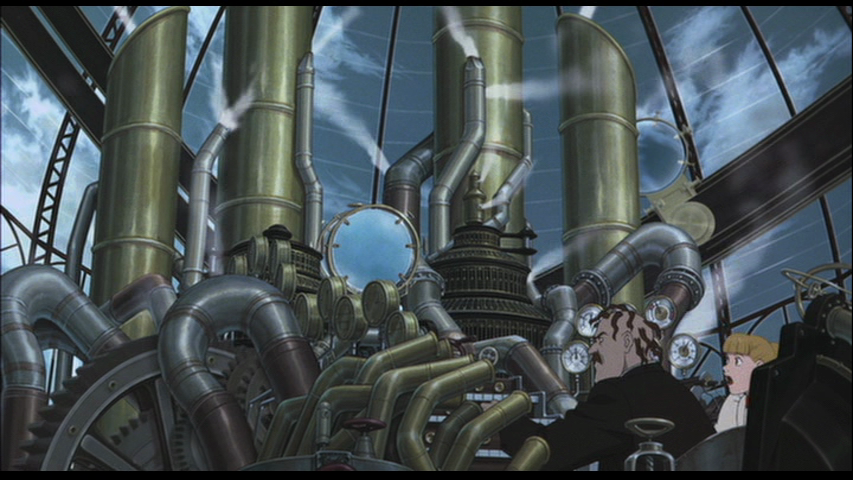

The result is an animated film that feels like the culmination of decades of Japanese animation blended nearly seamlessly with the new digital effects that would become the lifeblood of the industry. Otomo and his team labored for ten years to layer hundred of thousands of hand drawn cells with bleeding edge CG enhancements. A Visual Masterpiece of Painstaking Effort. Akin to the discovery of atomic energy, it could change the world, and many shadowy forces converge on young Ray in hopes of stealing his family’s secret. It is an experimental steam ball, capable of storing immense steam power. The youngest member of the Steam family, Edward’s son Ray, follows in the tradition of his grandfather and father, tinkering and making small discoveries until one day a package arrives from his missing grandfather.

While researching a purer source of steam in Alaska, the elder Steam, Lloyd and his ambitious son Edward suffer a reversal and are assumed missing…or worse. One family of inventors, with the apt last name of Steam, has revolutionized this source of energy, making it commercially viable for daily use.

In an alternate history, the era of steam power continued to dominate Europe instead of giving way to oil. Steamboy (2004) Just another day creating crazy steam-powered death machines, because Science! Despite being the long-awaited second film from creative genius Katsuhiro Otomo (Akira) and being the biggest budgeted film out of Japan in its day, Steamboy failed to make as big a wave in the US as other Japanese animated features released around the same time – most notably the works of Hayao Miyazaki. Its renditions of industrial evolution Europe, including painstakingly vivid architecture and machinery, reminded me of an underappreciated Japanese classic: Steamboy.

Steamboy is a sumptuous steam-punk adventure from the creative mind behind Akira.Īlthough it failed to entrance me with its story, this weekend’s animated feature Leap! had a visual style that felt very familiar.


 0 kommentar(er)
0 kommentar(er)
